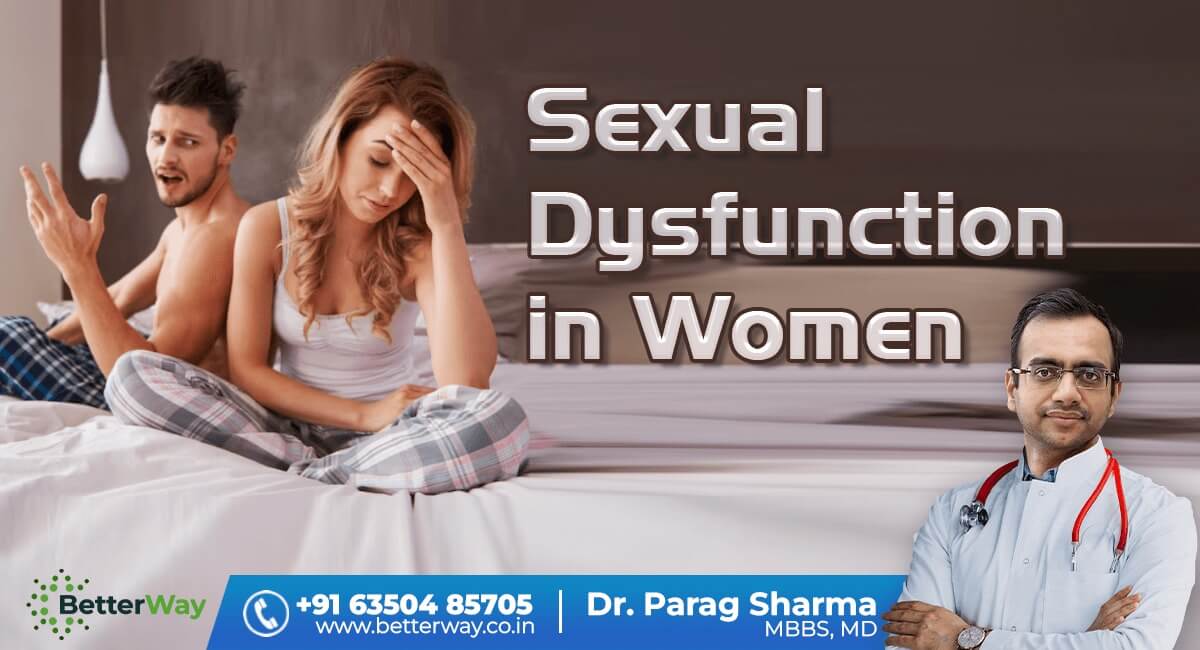Understanding Sexual Dysfunction in Indian Women: Causes, Symptoms, and Support
Sexual health is an essential part of overall well-being, yet it’s often ignored or stigmatized—especially for women in India. One of the most underreported concerns in women’s health is sexual dysfunction, which affects millions but is rarely discussed openly.
In this blog, we’ll break down what sexual dysfunction is, explore the female sexual response cycle, and explain how various issues can interfere with a woman’s ability to enjoy or participate in sexual activity. If you’ve been struggling in silence, know that you’re not alone—and help is available.
What Is the Female Sexual Response Cycle?
The sexual response cycle describes how the body and mind react to sexual arousal and activity. It includes four stages, experienced by both men and women, but with notable physical and emotional differences in women. Understanding these stages is key to identifying when something may be off.
The 4 Stages of the Sexual Response Cycle
1. Excitement Phase
This is the initial phase where sexual desire is triggered. In women, this includes:
Increased heart rate and breathing
Blood flow to the genitals
Swelling of the clitoris and labia
Vaginal lubrication
Breast fullness and nipple erection
2. Plateau Phase
Desire and arousal intensify:
Vaginal walls swell and darken in color
Clitoris becomes highly sensitive
Muscle tension and blood pressure continue to rise
Emotional and physical anticipation builds before orgasm
3. Orgasm Phase
The shortest but most intense phase:
Rhythmic muscular contractions in the pelvic area
Sudden release of built-up sexual tension
Heightened physical and emotional sensations
4. Resolution Phase
The body gradually returns to its normal state:
Decrease in muscle tension and heart rate
A sense of emotional satisfaction or fatigue
Women may experience multiple orgasms, unlike men, who enter a recovery (refractory) period
What Is Sexual Dysfunction in Women?
Sexual dysfunction in women refers to ongoing difficulties that prevent sexual satisfaction or participation. These issues can occur in any phase of the sexual response cycle and may be due to physical, hormonal, emotional, or psychological factors.
Common Types of Female Sexual Dysfunction
Low sexual desire (Hypoactive Sexual Desire Disorder): Little to no interest in sex or sexual thoughts.
Arousal disorders: Inability to stay mentally or physically aroused during sexual activity.
Anorgasmia: Difficulty or inability to reach orgasm.
Vaginal dryness: Often caused by hormonal changes (e.g., menopause), making sex painful or uncomfortable.
Vaginismus: Involuntary tightening of the vaginal muscles, making penetration painful or impossible.
How Common Is Sexual Dysfunction in India?
Sexual dysfunction affects an estimated 10–20% of the Indian population, with many more likely going unreported due to stigma, lack of awareness, or hesitation in seeking help. Globally, nearly 30–40% of adults experience sexual difficulties at some point in their lives.
Unfortunately, societal taboos around female sexuality in India mean that many women suffer in silence without diagnosis or treatment.
Signs and Symptoms of Sexual Dysfunction in Women
If you are experiencing any of the following symptoms, it may be time to speak to a healthcare provider:
Lack of interest or desire for sexual activity
Difficulty becoming aroused or staying aroused
Pain during intercourse
Inability to reach orgasm
Emotional distress or anxiety related to intimacy
Relationship strain due to sexual concerns
What Causes Sexual Dysfunction in Women?
Sexual dysfunction can result from multiple overlapping factors:
Psychological: Depression, anxiety, past trauma, body image issues
Hormonal: Menopause, pregnancy, thyroid disorders
Medical conditions: Diabetes, high blood pressure, chronic pain
Lifestyle: Stress, poor sleep, lack of exercise, substance use
Relational: Communication gaps, unresolved conflict, lack of trust
Why It’s Important to Seek Help
Sexual wellness is a key part of emotional and physical health. Ignoring problems can lead to long-term distress, relationship issues, and lower quality of life.
The good news? Most types of sexual dysfunction are treatable with the right combination of medical, psychological, and relational support.
How Can a Psychiatrist Help?
A psychiatrist specializing in sexual health can:
Diagnose underlying psychological or hormonal causes
Offer therapy for anxiety, depression, or relationship issues
Recommend medications or hormone treatments if needed
Provide a safe, confidential space to explore your concerns
Final Thoughts: You Deserve a Healthy, Fulfilling Sex Life
Sexual dysfunction is more common than most people realize—and it’s nothing to be ashamed of. If you’re struggling, you’re not alone. Seeking help is a brave and empowering step toward reclaiming your mental, emotional, and sexual well-being.
Get Confidential Help from a Trusted Online Psychiatrist
At BetterWay Mental Health, led by Dr. Parag Sharma (MD Psychiatry), we provide professional, compassionate care for women dealing with sexual dysfunction, anxiety, depression, or relationship stress.







4 Responses